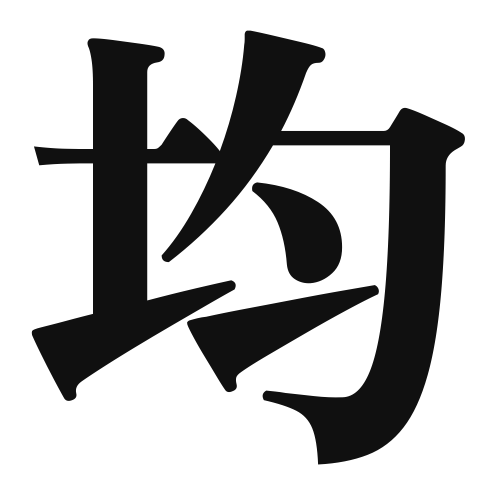1. Overview of Meaning
The kanji “均” (pronounced “kin” or “kyun”) means “even,” “equal,” or “uniform.” It conveys the idea of balance and equality in various contexts.
2. Formation and Radical
Formation of the Kanji: The kanji “均” is a compound character (会意文字) that combines elements to convey its meaning. It consists of the radical for “even” or “level” and other components that enhance its meaning.
Radical: The radical for “均” is “土” (earth), which often relates to stability and grounding, reflecting the concept of balance.
3. Examples of Usage
Common Words and Phrases: Some frequently used words that include “均” are “均等” (kintou – equality) and “均一” (kin’itsu – uniformity).
Example Sentences in Daily Conversation:
- この製品は均等に分配されています。 (This product is distributed evenly.)
- 私たちは均一なサービスを提供します。 (We provide uniform service.)
4. Synonyms and Antonyms
Similar Kanji: A similar kanji is “等” (tou), which also means “equal” but can imply a sense of ranking or class. “均” focuses more on the idea of balance without hierarchy.
Opposite Kanji: The opposite kanji is “不均” (fukin), meaning “uneven” or “unequal,” which directly contrasts with the concept of balance and uniformity.
5. Cultural and Historical Background
Relation to Japanese Culture: The concept of “均” is significant in Japanese culture, where harmony and balance are highly valued in various aspects of life, including social interactions and aesthetics.
Proverbs and Idioms: An example of a related proverb is “均等に分ける” (kintou ni wakeru), which means “to divide equally,” emphasizing fairness and equality in distribution.
